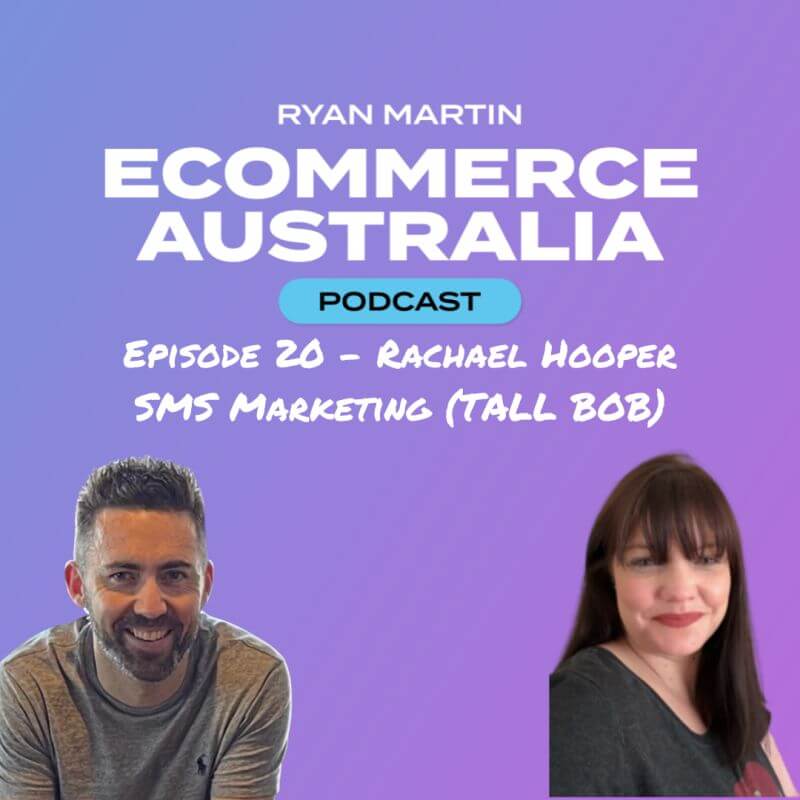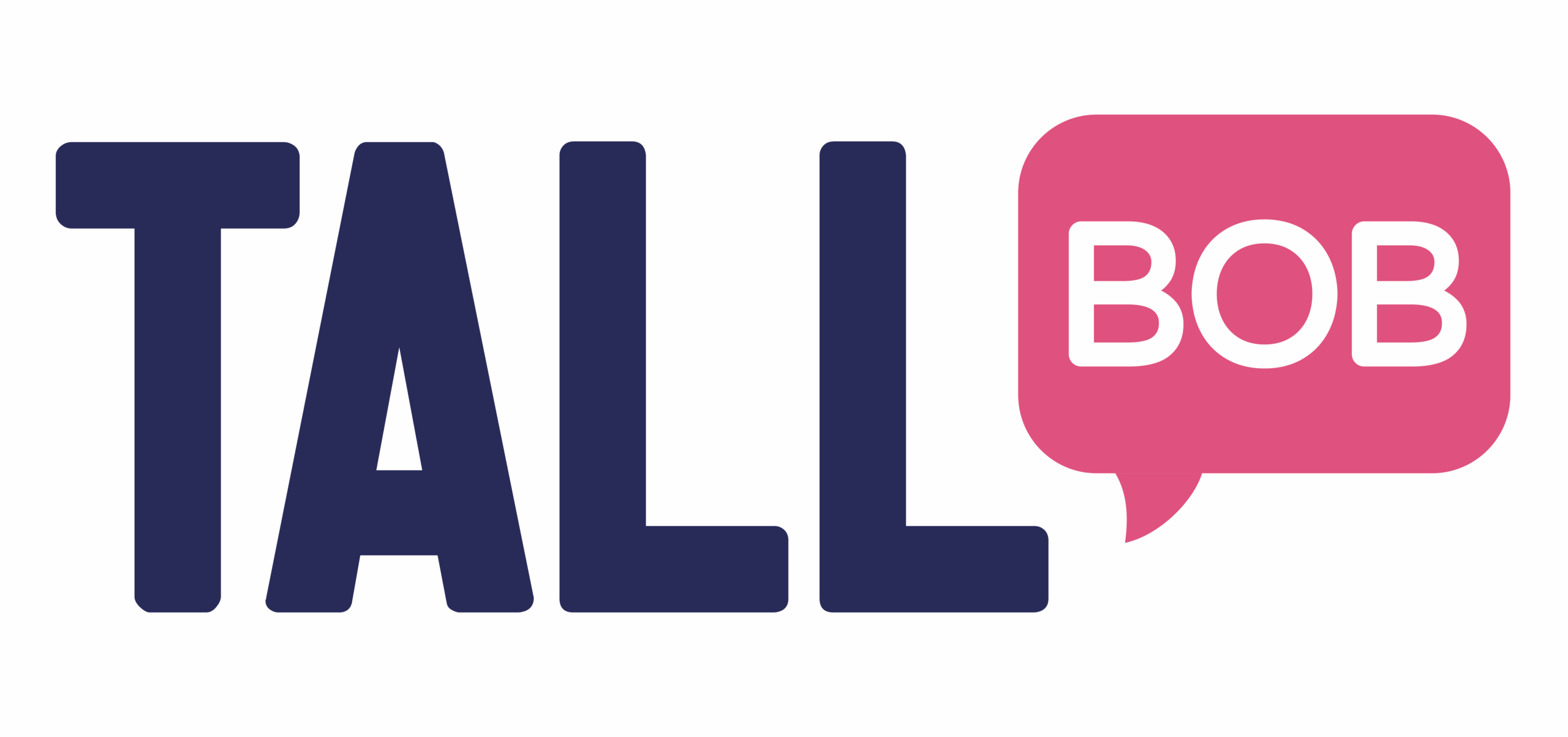Want to know the best tips for SMS by an SMS Marketer? First, check out Part 1 of our SMS Marketing series.
Here’s the down low on how to get the best match and provider set from the Head of Marketing at Tall Bob, Rach Hooper. It’s about how to do SMS marketing by an SMS marketer. And if you’re after Campaign Tips in Part 3.

Listen to the podcast
Want to know more? These tips are from Rach’s podcast with Ryan @ecommerce Australia
Listen to the PodcastHow to get started with SMS
Let’s say you’ve got an e-commerce business. And you’re like, yep, all right, that all makes complete sense. I want to start my first text campaign. Here are the natural questions we get asked almost every day:
- How do I get started?
- Do I need to find a provider?
- Do I need to find someone like Tall Bob to help me with some integrations and set it up?
- Or is it just literally sending a message and seeing what happens?
Firstly – we hate to tell people no, but NO. Don’t just start sending. Please!
Getting started on bringing SMS on onboard
Getting started is about getting set up with the right strategies, the right data and the right platform and matching to a provider that’s right for you.
We first ask what your ecommerce business is built upon – it’ll define many things for you. So, whether you’ve made on Shopify, Klaviyo, Emarsys, or Responsys; if you use Tealium or Salesforce or any number of these platforms, know what your options are in terms of who can service and support you for SMS, either natively, via native integration with a bring-your-own provider, or through webhooks and APIs.
Want to know more about what we integrate with? Here’s just a few.
Next, consider your use cases and how you plan to engage with your customers. Are you planning on doing relatively simple styles of things? SMS for marketing can take so many forms
Are you going to:
- Batch and blast? Okay, and its place. However, you can do a lot more than that.
- Abandoned carts
- Win back
- Shopping notifications
- Product launch
- Loyalty
- Exclusivity
From there, that will help you ensure that whether your customer data platform (CDP) or your marketing automation platform is right, what platforms or SMS providers and gateways can you integrate to.
Picking your SMS marketing provider
Once you know the lay of the land, it’s time to pick your provider. And there are a lot of SMS gateways out there. As an SMS marketer, you need to find a provider that compliments you.
One thing we like to do differently is SMS by Design. That’s thinking about SMS as more than just 160 characters and looking at more than just the immediate send in front of us. It’s feeling more about how to
- Build your database and keep it clean
- Create SMS campaigns that are highly targeted, measurable, scaleable and desired by your customers
- Crafting messages that go beyond just 160 characters
- Building customer experience flows that build upon customer insight and analytics
Want to know more about SMS by Design? Here’s how we do it.
The other thing is that it’s not SMS versus email, both are different channels, and each has additional content. And an incredible and unique customer journey should integrate that SMS and email, and you’re paid, social and retargeting feeds. And that’s how you’ll get that customer converting at the right time with all those different attribution points.
What is the best practice in SMS for Marketing?
A perennial question that Rach says can’t be specifically answered. The best practice is suitable for your customer, product and goals. To fit a fast-fashion, new product line best practice into a furniture ecommerce practice won’t work.
So, sadly, Rach says the best practice is working the data and analytics for your customer segments and knowing the essential metrics to shift.
One of the clients we work with has a database of nearly 100,000 that they can engage with, and their base responds brilliantly to SMS. But ecommerce is not their revenue driver; footfall is. That’s why their best practice SMS is to engage conversationally with their customers, drive traffic into the store, and measure the footfall. On the flip side, one of their sister brands is all about digital revenue and cart size, so the best practice for them is talking about loyalty, making sure that people are using their loyalty offers and redeeming offer codes that drive more giant shopping carts. Their loyalty comms mean they also use SMS for product launches, new product lines, or end-of-season sales via priority access.
That’s what best practice looks like. Best practices for you. Your customer. Your tangible metrics.
And SMS can become an invaluable channel for exclusivity and scarcity with highly targeted, SMS-only offers. It’s about using the medium for what is best: fast action and time-limited offers.
What are the dos and don’ts?
We get asked this all the time, and it’s about where your customers are and what your customer’s buying cycle is. Great marketers and great SMS marketers plan for their product lines and audiences.
If you are a fast-moving retail brand, text and text often, but make it super tight and relevant. New product line or end-of-season offers? Great. Have you limited stock or fear missing out? Fast-moving products and offers need fast engagement. You most likely can SMS regularly, mainly if your buyers periodically buy and engage with you. An easy tip? Ask if they are okay for you to engage with them regularly.
For less frequent buying cycles, say furniture and homewares, respect those customers with a slower journey style. Send SMS messages regularly, but not every week or every two weeks; you’re probably only going to need to talk to those customers once a month or every few months.
When you’re selling a consumable product, say skincare, beauty or hair care, it’s reasonable and predictable that your customers expect to hear from you every 45 days to top up their product. The best practice here is to test your channels, and we hope it’ll be the combination of email and SMS that’ll see the CLTV streaming through.
The common factor across all of this is that whatever you do, keep it regular and within that same messaging thread. That way, when people see your message, they know it’s yours. Because it’s familiar, and it’s predictable. One of the biggest don’ts for messaging is having your messages come from a range of different identities, or either numbers or alphanumeric tags to be consistent with where it’s coming from. That will cut through the spamminess and help your brand resonate much better.


